 Search by Keyword
|
"YOU'VE GOT TO HIDE YOUR LOVE AWAY"
(John Lennon - Paul McCartney)
Much can be said, and has been, about the influence of Bob Dylan on the songwriting of John Lennon. Ever since John’s first exposure to his music during The Beatles’ January, 1964 residency at the George V Hotel in Paris, he became enamored with Bob Dylan’s simple musical style and lyrical charm. Since Lennon was always known to mimic the recording artists he admired, it was only natural to hear some “Dylan” in his writing after this point.
 At first the influence was subtle, as evidenced by the “puffing” style of harmonica playing John performed on “I Should Have Known Better” in February of that year. By June, John’s lyrics were becoming more autobiographical, as witnessed on “I’ll Cry Instead.” By August he appeared to have actually taken on a piece of Bob Dylan’s persona in “I’m A Loser,” which featured touches of his lyrics (the word “clown” for example) as well as a spot-on replica of Bob Dylan’s harmonica playing in the instrumental section of the song. At first the influence was subtle, as evidenced by the “puffing” style of harmonica playing John performed on “I Should Have Known Better” in February of that year. By June, John’s lyrics were becoming more autobiographical, as witnessed on “I’ll Cry Instead.” By August he appeared to have actually taken on a piece of Bob Dylan’s persona in “I’m A Loser,” which featured touches of his lyrics (the word “clown” for example) as well as a spot-on replica of Bob Dylan’s harmonica playing in the instrumental section of the song.
 The most cited reference to Bob Dylan’s influence on John’s songwriting is always the February, 1965 recorded “You’ve Got To Hide Your Love Away.” The folksy guitar playing in 3/4 time, the gruff single-tracked vocals, and the almost completely acoustic arrangement scream Bob Dylan as if John were channeling him at the time. The similarities were superficial, of course, as Bob Dylan himself would probably not have written a song quite like it. However, this was Lennon’s strongest interpretation of what Bob Dylan’s music sounded like to him. And in the process, the impact this track had on Beatles’ fans was tremendous. The most cited reference to Bob Dylan’s influence on John’s songwriting is always the February, 1965 recorded “You’ve Got To Hide Your Love Away.” The folksy guitar playing in 3/4 time, the gruff single-tracked vocals, and the almost completely acoustic arrangement scream Bob Dylan as if John were channeling him at the time. The similarities were superficial, of course, as Bob Dylan himself would probably not have written a song quite like it. However, this was Lennon’s strongest interpretation of what Bob Dylan’s music sounded like to him. And in the process, the impact this track had on Beatles’ fans was tremendous.
Songwriting History
“That’s me in my Dylan period,” Lennon explained in 1980. “I am like a chameleon, influenced by whatever is going on. If Elvis can do it, I can do it. If The Everly Brothers can do it, Paul and me can. Same with Bob Dylan.”
 Regarding Bob Dylan, Paul McCartney recalls, “John particularly became very enamored of him because of his poetry. All those songs were great lyrically. Masses of cluttered lyrics like John had written in his books. So Dylan’s gobbledegook and his cluttered poetry was very appealing, it hit a chord in John, it was as if John felt, ‘That should have been me.’ And to that end, John on this one track did a Dylan impression.” Regarding Bob Dylan, Paul McCartney recalls, “John particularly became very enamored of him because of his poetry. All those songs were great lyrically. Masses of cluttered lyrics like John had written in his books. So Dylan’s gobbledegook and his cluttered poetry was very appealing, it hit a chord in John, it was as if John felt, ‘That should have been me.’ And to that end, John on this one track did a Dylan impression.”
 John himself identified where the song was written: “I was in Kenwood and I would just be songwriting. The period would be for songwriting and so, everyday, I would attempt to write a song, and it’s one of those that you sort of sing a bit sadly to yourself, ‘Here I stand, head in hand.’” John himself identified where the song was written: “I was in Kenwood and I would just be songwriting. The period would be for songwriting and so, everyday, I would attempt to write a song, and it’s one of those that you sort of sing a bit sadly to yourself, ‘Here I stand, head in hand.’”
 A comparison can easily be made between Lennon’s “You’ve Got To Hide Your Love Away” and Bob Dylan’s “I Don’t Believe You (She Acts Like We Never Met).” Bob Dylan’s song starts out with the lyrics “I can’t understand, she let go of my hand, and left me here facing a wall,” which is quite similar to “Here I stand, head in hand, turn my face to the wall” at the beginning of John’s song. A comparison can easily be made between Lennon’s “You’ve Got To Hide Your Love Away” and Bob Dylan’s “I Don’t Believe You (She Acts Like We Never Met).” Bob Dylan’s song starts out with the lyrics “I can’t understand, she let go of my hand, and left me here facing a wall,” which is quite similar to “Here I stand, head in hand, turn my face to the wall” at the beginning of John’s song.
Since Bob Dylan’s song is from his album “Another Side Of Bob Dylan,” which was released on August 8th, 1964, John’s song must have been written after this date. And since it was written at Lennon’s Kenwood home, the time of writing can easily by traced to between December, 1964 and January, 1965 during their three week residency in London performing their variety show “Another Beatles Christmas Show.” After January 16th, John and Cynthia, along with George Martin and his future wife Judy Lockhart-Smith, were off to St. Moritz for a skiing vacation and weren’t back until February 7th, 1965, so it’s quite likely that the song was written before their trip.
 McCartney corroborates with Lennon as to the authorship of the song, sort of: "I think it was 100 per cent John’s song. I might have helped him on it, I have a vague recollection of helping to fill out some verses for him." In his book "The Lyrics," Paul relates about their inspiration for the song: "In the earliest days we were pretending to be Buddy Holly. Then we were writing like Motown. Then we were writing like Bob Dylan. There's alway someone else you can invoke. You can put on a mask and a cloak as your're writing something, and it takes away a lot of the anxiety. It frees you up. You discover as you get through it that it wasn't a (Bob Dylan) song anyway; it was yours. The song takes on its own character." McCartney corroborates with Lennon as to the authorship of the song, sort of: "I think it was 100 per cent John’s song. I might have helped him on it, I have a vague recollection of helping to fill out some verses for him." In his book "The Lyrics," Paul relates about their inspiration for the song: "In the earliest days we were pretending to be Buddy Holly. Then we were writing like Motown. Then we were writing like Bob Dylan. There's alway someone else you can invoke. You can put on a mask and a cloak as your're writing something, and it takes away a lot of the anxiety. It frees you up. You discover as you get through it that it wasn't a (Bob Dylan) song anyway; it was yours. The song takes on its own character."
 An opinion about the topic Lennon is singing about in this song has been circulating for years, which was no doubt started by gay rights activist Tom Robinson. He suggested that John was singing about homosexuality and, in particular, the life of their manager Brian Epstein. Since practicing this lifestyle was against the law in Britain at the time, Brian would have to ‘hide his love away,’ so to speak. Lyrics like “everywhere people stare…I can see them laugh at me,” as well as John’s supposed affair with Brian, only added to this opinions’ validity. An opinion about the topic Lennon is singing about in this song has been circulating for years, which was no doubt started by gay rights activist Tom Robinson. He suggested that John was singing about homosexuality and, in particular, the life of their manager Brian Epstein. Since practicing this lifestyle was against the law in Britain at the time, Brian would have to ‘hide his love away,’ so to speak. Lyrics like “everywhere people stare…I can see them laugh at me,” as well as John’s supposed affair with Brian, only added to this opinions’ validity.
 But, in fact, John himself explained candidly what the lyrics meant: “I’d started thinking of my own emotions. I don’t know when exactly it started, like ‘I’m A Loser’ or ‘Hide Your Love Away,’ those kind of things. Instead of projecting myself into a situation, I would try to express what I felt about myself, which I’d done in my books. I think it was Dylan who helped me realize that – not by any discussion or anything, but by hearing his work…To express myself I would write ‘A Spaniard In The Works’ or ‘In His Own Write,’ the personal stories which were expressive of my personal emotions. Then I started being me about the songs, not writing them objectively, but subjectively.” But, in fact, John himself explained candidly what the lyrics meant: “I’d started thinking of my own emotions. I don’t know when exactly it started, like ‘I’m A Loser’ or ‘Hide Your Love Away,’ those kind of things. Instead of projecting myself into a situation, I would try to express what I felt about myself, which I’d done in my books. I think it was Dylan who helped me realize that – not by any discussion or anything, but by hearing his work…To express myself I would write ‘A Spaniard In The Works’ or ‘In His Own Write,’ the personal stories which were expressive of my personal emotions. Then I started being me about the songs, not writing them objectively, but subjectively.”
 Clearly, John was truly writing about himself and his inner emotions. Just as “I’m A Loser” and “Help!” showed his insecure and depressive side, “You’ve Got To Hide Your Love Away” similarly reflects what he was experiencing “behind the mask,” so to speak. Equating this song with homosexuality falls into the same category as some activists' claims that the character Geppetto in the story “Pinocchio” was a pedophile, as some today ridiculously suggest. Clearly, John was truly writing about himself and his inner emotions. Just as “I’m A Loser” and “Help!” showed his insecure and depressive side, “You’ve Got To Hide Your Love Away” similarly reflects what he was experiencing “behind the mask,” so to speak. Equating this song with homosexuality falls into the same category as some activists' claims that the character Geppetto in the story “Pinocchio” was a pedophile, as some today ridiculously suggest.
Recording History
The Beatles designated six straight days in the third week of February, 1965 for the recording of songs to be used in their upcoming film. This Monday through Saturday ran from February 15th through 20th, and three days later they were on location in the Bahamas shooting the movie.
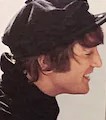 By Thursday, February 18th, 1965, mono mixes were already being made of the songs they had recorded on the three previous days. In between these mixing sessions, The Beatles entered EMI Studio Two to record three additional songs. The first completed on this day, from 3:30 to 5:15 pm, was John’s “You’ve Got To Hide Your Love Away.” By Thursday, February 18th, 1965, mono mixes were already being made of the songs they had recorded on the three previous days. In between these mixing sessions, The Beatles entered EMI Studio Two to record three additional songs. The first completed on this day, from 3:30 to 5:15 pm, was John’s “You’ve Got To Hide Your Love Away.”
 Pete Shotton, John Lennon’s closest childhood friend, happened to have been present in the recording studio on this day to witness the recording of the song. His eyewitness account verifies that the lyrics in the first verse actually were “feeling two foot tall” but that during an early take, John accidentally sang “two foot small.” “Let’s leave that in, actually,” Lennon exclaimed, “All those psueds will really love it,” referring to ‘psuedo-intellectuals.’ Pete Shotton is actually credited for the idea of John shouting “hey” during the choruses of the song. Pete Shotton, John Lennon’s closest childhood friend, happened to have been present in the recording studio on this day to witness the recording of the song. His eyewitness account verifies that the lyrics in the first verse actually were “feeling two foot tall” but that during an early take, John accidentally sang “two foot small.” “Let’s leave that in, actually,” Lennon exclaimed, “All those psueds will really love it,” referring to ‘psuedo-intellectuals.’ Pete Shotton is actually credited for the idea of John shouting “hey” during the choruses of the song.
 Producer George Martin had a particular concern about John’s singing on this song. “I asked him not to sound too much like (Bob) Dylan. He wasn’t doing it deliberately; it was subconscious more than anything.” Nonetheless, what came out was “a Dylan impression,” as McCartney described it. Producer George Martin had a particular concern about John’s singing on this song. “I asked him not to sound too much like (Bob) Dylan. He wasn’t doing it deliberately; it was subconscious more than anything.” Nonetheless, what came out was “a Dylan impression,” as McCartney described it.
 The rhythm track consisted of John Lennon on his Framus "Hootenanny" 12-string acoustic guitar, Ringo playing his snare drum with brushes, Paul on bass and George on six-string acoustic guitar. According to George Martin's handwritten notes (on exhibit at Liverpool's "The Beatles Story"), this entire rhythm track was recorded on track one of the four-track tape. While many sources state that this is the first fully acoustic performance by The Beatles, Paul playing his electric Hofner bass guitar nullifies this claim. John did choose to record his vocals while he played guitar as evidenced by released early takes of the song but, as George Martin's notes indicate, his proper vocal performance as heard on the record was recorded as an overdub onto track two of the tape. Therefore, the vocal performances John made during the recording of the rhythm track were apparently veiwed as guide vocals. The rhythm track consisted of John Lennon on his Framus "Hootenanny" 12-string acoustic guitar, Ringo playing his snare drum with brushes, Paul on bass and George on six-string acoustic guitar. According to George Martin's handwritten notes (on exhibit at Liverpool's "The Beatles Story"), this entire rhythm track was recorded on track one of the four-track tape. While many sources state that this is the first fully acoustic performance by The Beatles, Paul playing his electric Hofner bass guitar nullifies this claim. John did choose to record his vocals while he played guitar as evidenced by released early takes of the song but, as George Martin's notes indicate, his proper vocal performance as heard on the record was recorded as an overdub onto track two of the tape. Therefore, the vocal performances John made during the recording of the rhythm track were apparently veiwed as guide vocals.
 "Take one" doesn't get any farther than a few guitar strums before John exclaims “hold on, hold on” because of an improper positioning of either the guitar microphone or the capo John was using on his guitar. Ringo thinks he was the reason why John stopped the take, wrongfully confessing “I was out” (meaning "out of time"). However, John indicates the real reason for stopping the performance by making the necessary adjustment, explaining “I’m just gonna raise this so it’s nearer the bass strings than the top string.” "Take one" doesn't get any farther than a few guitar strums before John exclaims “hold on, hold on” because of an improper positioning of either the guitar microphone or the capo John was using on his guitar. Ringo thinks he was the reason why John stopped the take, wrongfully confessing “I was out” (meaning "out of time"). However, John indicates the real reason for stopping the performance by making the necessary adjustment, explaining “I’m just gonna raise this so it’s nearer the bass strings than the top string.”
 "Take two" didn’t get very far either, but was preceded by Paul breaking a drinking glass in the studio. This resulted in John kiddingly singing “Paul’s broken a glass, broken a glass, Paul’s broken a glass, a glass, a glass he broke today,” while Ringo accompanies him on the brushes. As he starts to count-down "take two," John stops to ask Paul, "Are you ready, Macca?" "Take two" didn’t get very far either, but was preceded by Paul breaking a drinking glass in the studio. This resulted in John kiddingly singing “Paul’s broken a glass, broken a glass, Paul’s broken a glass, a glass, a glass he broke today,” while Ringo accompanies him on the brushes. As he starts to count-down "take two," John stops to ask Paul, "Are you ready, Macca?"
 The first complete take they made of the song was "take five," which can be heard on the album “Anthology 2” (as with the above mentioned takes). Even though this recording was near flawless, they apparently felt it could be improved upon. Therefore, they proceeded with three more incomplete takes until finally "take nine" was complete and deemed the best. The first complete take they made of the song was "take five," which can be heard on the album “Anthology 2” (as with the above mentioned takes). Even though this recording was near flawless, they apparently felt it could be improved upon. Therefore, they proceeded with three more incomplete takes until finally "take nine" was complete and deemed the best.
 Onto this, they started adding overdubs. George Martin's notes indicate that John overdubbed his lead vocal onto track two, while Ringo added a tambourine, Paul added maracas, and George added a second 12-string guitar simultaneously onto track three. George Martin scribbled on his notes, "Have to use flute on Track 4," which is exactly what was done. Onto this, they started adding overdubs. George Martin's notes indicate that John overdubbed his lead vocal onto track two, while Ringo added a tambourine, Paul added maracas, and George added a second 12-string guitar simultaneously onto track three. George Martin scribbled on his notes, "Have to use flute on Track 4," which is exactly what was done.
 "George Martin suggested we put a flute solo on it, so we thought, 'Well, we'll give it a try,'" Paul relates in his book "The Lyrics" concerning this song. "George was always very good at selecting musicians. He knew the pool, so we always got the top guys, often classical musicians or jazz musicians who were doing sessions to earn a little extra money. That's how we were first coaxed into the idea of having other instrumentation...So, after we'd seen how that was all done and we started broadening our horizons, the sky was the limit." "George Martin suggested we put a flute solo on it, so we thought, 'Well, we'll give it a try,'" Paul relates in his book "The Lyrics" concerning this song. "George was always very good at selecting musicians. He knew the pool, so we always got the top guys, often classical musicians or jazz musicians who were doing sessions to earn a little extra money. That's how we were first coaxed into the idea of having other instrumentation...So, after we'd seen how that was all done and we started broadening our horizons, the sky was the limit."
 It apparently already had been determined that a flute overdub was needed for the end of the song because a hired studio musician named Johnnie Scott was present on this day as well. He was a familiar face at EMI studios, working as a musical arranger as well as musician. “They told me roughly what they wanted, 3/4 time,” Johnnie remembers, “and the best way of fulfilling their needs was to play both tenor flute and alto flute, the second as an overdub. As I recall, all four of them were there and Ringo was full of marital joys, he’d just come back from his honeymoon." With this overdub complete by 5:15 pm, the session was over, only to give way to another scheduled recording session at 6 pm. It apparently already had been determined that a flute overdub was needed for the end of the song because a hired studio musician named Johnnie Scott was present on this day as well. He was a familiar face at EMI studios, working as a musical arranger as well as musician. “They told me roughly what they wanted, 3/4 time,” Johnnie remembers, “and the best way of fulfilling their needs was to play both tenor flute and alto flute, the second as an overdub. As I recall, all four of them were there and Ringo was full of marital joys, he’d just come back from his honeymoon." With this overdub complete by 5:15 pm, the session was over, only to give way to another scheduled recording session at 6 pm.
 The mono mix of the song was prepared on February 20th, 1965, during their last recording session before they left for the Bahamas. The mixing session was in the control room of EMI Studio Two with George Martin and engineers Norman Smith and Ken Scott in attendance. This mix has the vocals a little less prominent than the familiar stereo mix, as well as having less reverb. This is what is heard on the British mono album as well as in the first prints of the movie “Help!" The mono mix of the song was prepared on February 20th, 1965, during their last recording session before they left for the Bahamas. The mixing session was in the control room of EMI Studio Two with George Martin and engineers Norman Smith and Ken Scott in attendance. This mix has the vocals a little less prominent than the familiar stereo mix, as well as having less reverb. This is what is heard on the British mono album as well as in the first prints of the movie “Help!"
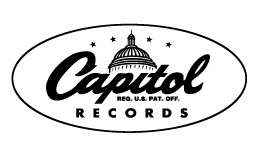 The first stereo mix of the song was made on February 23rd, 1965 in the control room of EMI Studio Two, but George Martin wasn’t in attendance. He left this duty to engineers Norman Smith and Malcolm Davies. This mix was featured on the stereo versions of both the British and American albums, as well as the mono American album because of Capitol Records’ decision to create a “type B” mix-down from the stereo mix. The first stereo mix of the song was made on February 23rd, 1965 in the control room of EMI Studio Two, but George Martin wasn’t in attendance. He left this duty to engineers Norman Smith and Malcolm Davies. This mix was featured on the stereo versions of both the British and American albums, as well as the mono American album because of Capitol Records’ decision to create a “type B” mix-down from the stereo mix.
 In preparation for the compact disc release of the “Help!” album, George Martin thought to have a crack at creating a new stereo mix to improve the quality in 1986. The results appear on this release, which is virtually the same as the original 1965 stereo mix. In preparation for the compact disc release of the “Help!” album, George Martin thought to have a crack at creating a new stereo mix to improve the quality in 1986. The results appear on this release, which is virtually the same as the original 1965 stereo mix.
Sometime in 1995, George Martin and engineer Geoff Emerick returned to the master tapes to put together highlights of early takes of the song for inclusion on the compilation album "Anthology 2."
 Giles Martin was given the task in 2023 of creating a "demix remix" of "You've Got To Hide Your Love Away" for inclusion on the 50th Anniversary edition of the compilation album "The Beatles / 1962 - 1966" (aka "The Red Album"). With Peter Jackson's AI technology at his disposal, Giles Martin was able to utilize this "new machine-learning techology" so that "individual elements that were put to tape...and were therefore impossible to separate" could be "untangled, allowing Giles (Martin) to put the original recordings back together with even greater clarity and impact," as stated by John Harris in the liner notes of the above mentioned album. This is arguably the most vibrant and satisfying stereo version of the song to date. Giles Martin was given the task in 2023 of creating a "demix remix" of "You've Got To Hide Your Love Away" for inclusion on the 50th Anniversary edition of the compilation album "The Beatles / 1962 - 1966" (aka "The Red Album"). With Peter Jackson's AI technology at his disposal, Giles Martin was able to utilize this "new machine-learning techology" so that "individual elements that were put to tape...and were therefore impossible to separate" could be "untangled, allowing Giles (Martin) to put the original recordings back together with even greater clarity and impact," as stated by John Harris in the liner notes of the above mentioned album. This is arguably the most vibrant and satisfying stereo version of the song to date.
Song Structure and Style
 When examining The Beatles catalog, Lennon is the one who dominates in using 3/4 time for their original compositions. While songs like “This Boy,” “Baby’s In Black” and “Yes It Is” (which was recorded just two days prior to this song) are all acknowledged as true Lennon / McCartney collaborations, John appears to be the catalyst to their original inspiration. Further emphasizing his love for this time signature, John is the Beatle who used it the most thereafter (“Norwegian Wood,” “Lucy In The Sky With Diamonds” and “Yer Blues” among others) while both McCartney and Harrison used it sparingly. When examining The Beatles catalog, Lennon is the one who dominates in using 3/4 time for their original compositions. While songs like “This Boy,” “Baby’s In Black” and “Yes It Is” (which was recorded just two days prior to this song) are all acknowledged as true Lennon / McCartney collaborations, John appears to be the catalyst to their original inspiration. Further emphasizing his love for this time signature, John is the Beatle who used it the most thereafter (“Norwegian Wood,” “Lucy In The Sky With Diamonds” and “Yer Blues” among others) while both McCartney and Harrison used it sparingly.
 As for structure, “You’ve Got To Hide Your Love Away” appears as a hybrid of a standard pop format and the folk ballad, the latter of which being used as a model by John for this song. This structure reveals itself as ‘verse/ verse/ chorus/ verse/ verse/ chorus/ verse’ (or aabaaba). A quick two measure introduction, used only to lay the groundwork of the home key of G, begins proceedings, while an instrumental version of the verse works as a conclusion. As for structure, “You’ve Got To Hide Your Love Away” appears as a hybrid of a standard pop format and the folk ballad, the latter of which being used as a model by John for this song. This structure reveals itself as ‘verse/ verse/ chorus/ verse/ verse/ chorus/ verse’ (or aabaaba). A quick two measure introduction, used only to lay the groundwork of the home key of G, begins proceedings, while an instrumental version of the verse works as a conclusion.
 The full rhythm section, consisting of two acoustic guitars (George playing a 1950 Jose Ramirez spanish guitar), bass guitar and brushed snare drum, appears right on the downbeat of the introduction and is maintained throughout the entire song. The vocals emerge immediately on the one beat of the first verse, which is an unusual eighteen measures long. The downcast melody line John sings throughout all of the verses only ranges five notes, as if his depressed mood won’t let him bother to stray any further. Symmetrically, you would expect the verse to end after sixteen measures but, as is Lennon’s habit, he adds two extra measures at the end to add weight to his final thought; in this case “feeling two foot small.” The full rhythm section, consisting of two acoustic guitars (George playing a 1950 Jose Ramirez spanish guitar), bass guitar and brushed snare drum, appears right on the downbeat of the introduction and is maintained throughout the entire song. The vocals emerge immediately on the one beat of the first verse, which is an unusual eighteen measures long. The downcast melody line John sings throughout all of the verses only ranges five notes, as if his depressed mood won’t let him bother to stray any further. Symmetrically, you would expect the verse to end after sixteen measures but, as is Lennon’s habit, he adds two extra measures at the end to add weight to his final thought; in this case “feeling two foot small.”
 John punches up his low-keyed vocals at the beginning of the second verse to accentuate another facet of his mood with the lyrics “Everywhere people stare…” Another element added to differentiate this verse from the last is Ringo’s tambourine, which gives its accents on the downbeat of every other measure. The most noticeable new feature to this second verse is the addition of two more measures at the end, which makes this verse twenty measures in length. These are used to emphasize the falling bass notes of the final D chord which create an inevitable segue into the chorus that follows. The inevitability is further evident from the final lyrics of this verse which are “and I hear them say…” John punches up his low-keyed vocals at the beginning of the second verse to accentuate another facet of his mood with the lyrics “Everywhere people stare…” Another element added to differentiate this verse from the last is Ringo’s tambourine, which gives its accents on the downbeat of every other measure. The most noticeable new feature to this second verse is the addition of two more measures at the end, which makes this verse twenty measures in length. These are used to emphasize the falling bass notes of the final D chord which create an inevitable segue into the chorus that follows. The inevitability is further evident from the final lyrics of this verse which are “and I hear them say…”
 The chorus is a symmetrical sixteen measures long and, thanks to John’s friend Pete Shotton, shoots the vocal note range up a full octave on the word “Hey.” While this chorus is simply an excuse for repeating the title of the song twice, it acts as the focal point to the whole proceedings. Another percussive element is introduced at this point, this being McCartney’s overdubbed maracas, which suddenly disappear immediately after the sixteenth measure ends. The chorus is a symmetrical sixteen measures long and, thanks to John’s friend Pete Shotton, shoots the vocal note range up a full octave on the word “Hey.” While this chorus is simply an excuse for repeating the title of the song twice, it acts as the focal point to the whole proceedings. Another percussive element is introduced at this point, this being McCartney’s overdubbed maracas, which suddenly disappear immediately after the sixteenth measure ends.
While the intensity of everyone’s performance has peaked in the chorus, everything returns to its subdued feel as the third verse begins, which goes back to the eighteen measure format as heard in the first verse. The musical arrangement is the same this time except that the tambourine is still played.
 The fourth verse steps up the power somewhat just like what was heard in the second verse, but this time with the accusing tone of Lennon’s lyric “How could she say to me love will find a way?” Like the second verse, this is also twenty measures long with the added dropping bass notes at the end, which allows John’s line “let me hear you say…” hang in the air for a while. The fourth verse steps up the power somewhat just like what was heard in the second verse, but this time with the accusing tone of Lennon’s lyric “How could she say to me love will find a way?” Like the second verse, this is also twenty measures long with the added dropping bass notes at the end, which allows John’s line “let me hear you say…” hang in the air for a while.
The chorus is then repeated, which is structurally and lyrically identical and with the overdubbed maracas reappearing. After this occurs, another verse begins but not with the same subdued feel that the previous verses had. This is because this final verse acts as an instrumental conclusion to the song. Both a tenor and alto flute play a melody line roughly mimicking what John sings in the verses. Both the tambourine and maracas continue through this section, the maracas being shaken very fast for emphasis whenever the mood was right.
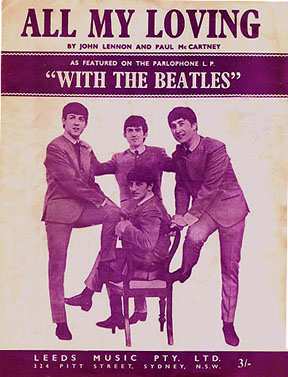 What would be expected at this point, as usually heard in The Beatles catalog as well as in pop music in general in the sixties, is that this instrumental section would be followed by another section of the song, such as another chorus. (The examples are endless, but for argument's sake, notice “All My Loving,” “Baby It’s You,” “I Should Have Known Better” and “Every Little Thing.”) But in this case, probably because of the reflective nature of the lyrics, the song ends in this unexpected way. At first listen, we can’t help but acknowledge the anti-climactic feel of this conclusion, leaving us with an expression on our faces that say, “That’s it?” But with the upturned final note hanging in the air as if there is another chapter of this story to be told, we’ve all come to realize that the conclusion is indeed fitting. What would be expected at this point, as usually heard in The Beatles catalog as well as in pop music in general in the sixties, is that this instrumental section would be followed by another section of the song, such as another chorus. (The examples are endless, but for argument's sake, notice “All My Loving,” “Baby It’s You,” “I Should Have Known Better” and “Every Little Thing.”) But in this case, probably because of the reflective nature of the lyrics, the song ends in this unexpected way. At first listen, we can’t help but acknowledge the anti-climactic feel of this conclusion, leaving us with an expression on our faces that say, “That’s it?” But with the upturned final note hanging in the air as if there is another chapter of this story to be told, we’ve all come to realize that the conclusion is indeed fitting.
 John’s singer/songwriter persona is probably in its highest form on this song and is performed extremely convincingly. Gratefully, it was determined that double-tracked vocals wouldn’t be fitting here because of the subject matter. Instead we feel the intensity of John’s pain through his Bob Dylan-like gruffness and vocal imperfections, which would have been slurred by double-tracking. John’s singer/songwriter persona is probably in its highest form on this song and is performed extremely convincingly. Gratefully, it was determined that double-tracked vocals wouldn’t be fitting here because of the subject matter. Instead we feel the intensity of John’s pain through his Bob Dylan-like gruffness and vocal imperfections, which would have been slurred by double-tracking.
 Paul’s bass work is fitting for the occasion as well as his skilled maraca shaking. We can be grateful that he recognized that this wasn’t the place to inject any harmony vocals, which would have detracted from the intimate feel of the song. George plays two acoustic guitars on the song but both are placed somewhat low in the mix, meaning his contributions end up being somewhat nonessential. Ringo gets to display his brush technique on his snare drum while overdubbing tambourine accents with his usual perfect timing. Paul’s bass work is fitting for the occasion as well as his skilled maraca shaking. We can be grateful that he recognized that this wasn’t the place to inject any harmony vocals, which would have detracted from the intimate feel of the song. George plays two acoustic guitars on the song but both are placed somewhat low in the mix, meaning his contributions end up being somewhat nonessential. Ringo gets to display his brush technique on his snare drum while overdubbing tambourine accents with his usual perfect timing.
 John’s lyrics, while quite imaginative, leave too many details out to give us a complete picture. His aim, no doubt, is to re-create the essence of Bob Dylan’s songwriting but leaving it vague enough to keep us wondering. For instance, did his girl leave him? He appears not to be sure himself, as he sings, “if she’s gone I can’t go on.” It sounds as if he’s returned home to find all of her things have been emptied out. John’s lyrics, while quite imaginative, leave too many details out to give us a complete picture. His aim, no doubt, is to re-create the essence of Bob Dylan’s songwriting but leaving it vague enough to keep us wondering. For instance, did his girl leave him? He appears not to be sure himself, as he sings, “if she’s gone I can’t go on.” It sounds as if he’s returned home to find all of her things have been emptied out.
 Another line that leaves us wondering is “How could she say to me, ‘love will find a way.’” Apparently she had consoled him previously concerning the hopefulness of working things out between them, only to find her now abandoning the relationship. Another line that leaves us wondering is “How could she say to me, ‘love will find a way.’” Apparently she had consoled him previously concerning the hopefulness of working things out between them, only to find her now abandoning the relationship.
The overall affect that the broken relationship has on John is what he decides to focus mostly on, wanting us to fully understand the reason for his wallowing in self-pity. Lyrics like “here I stand, head in hand, turn my face to the wall,” “feeling two foot small” and “how can I even try, I can never win” emphasize what he most wants us to know.
 It even seems that everyone around him notices his plight and they either “stare” at him, “laugh” at him or offer their advice. All these “clowns” say he should “hide” how he feels which, in effect, leaves him miserable. As to John’s use of the word “clown,” this is a reprise of its inclusion in the previous year's “I’m A Loser,” which is his other obvious Bob Dylan-esque song. “Dylan had used it so I thought it was alright,” John said in 1974, “and it rhymed with whatever I was doing.” It even seems that everyone around him notices his plight and they either “stare” at him, “laugh” at him or offer their advice. All these “clowns” say he should “hide” how he feels which, in effect, leaves him miserable. As to John’s use of the word “clown,” this is a reprise of its inclusion in the previous year's “I’m A Loser,” which is his other obvious Bob Dylan-esque song. “Dylan had used it so I thought it was alright,” John said in 1974, “and it rhymed with whatever I was doing.”
American Releases
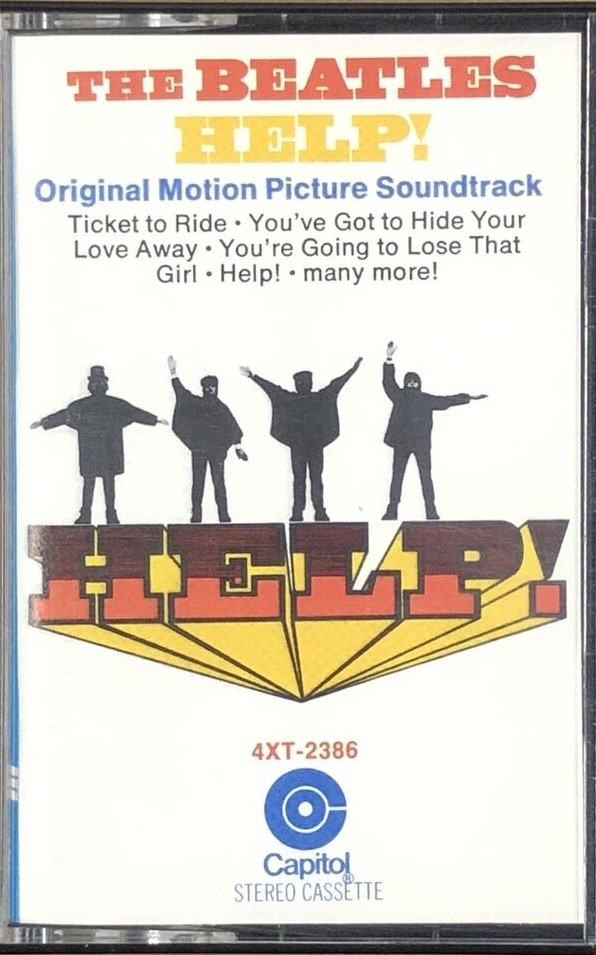 August 13th, 1965 was the date that “You’ve Got To Hide Your Love Away” had its debut release in the US on the Capitol “Help!” Soundtrack album. Since Capitol created a “Type B” mono mix from the stereo mix they received from Britain, American audiences could only hear George Martin’s meticulous mono mix in movie theaters that year. This soundtrack album was released on an individual compact disc on January 21st, 2014, both the mono and the stereo mixes being contained on a single CD. August 13th, 1965 was the date that “You’ve Got To Hide Your Love Away” had its debut release in the US on the Capitol “Help!” Soundtrack album. Since Capitol created a “Type B” mono mix from the stereo mix they received from Britain, American audiences could only hear George Martin’s meticulous mono mix in movie theaters that year. This soundtrack album was released on an individual compact disc on January 21st, 2014, both the mono and the stereo mixes being contained on a single CD.
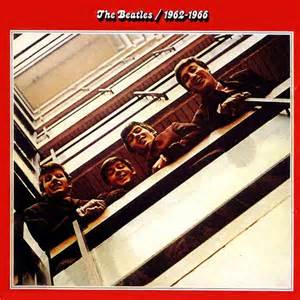 Since the song became a standout track in the movie and on the soundtrack album, it earned a place on the first official “greatest hits” package released on April 19th, 1973. This double-album was entitled “The Beatles/1962-1966,” although it has affectionately been nick-named “The Red Album.” This compilation was remastered and re-released on compact disc in September of 1993. Since the song became a standout track in the movie and on the soundtrack album, it earned a place on the first official “greatest hits” package released on April 19th, 1973. This double-album was entitled “The Beatles/1962-1966,” although it has affectionately been nick-named “The Red Album.” This compilation was remastered and re-released on compact disc in September of 1993.
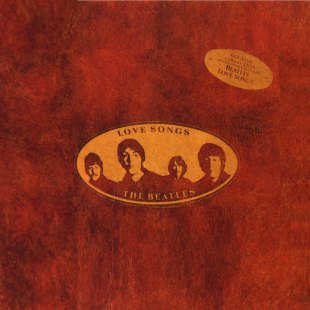 Its presence on this two-album set didn’t stop Capitol from including it on another compilation album, this being the October 21st, 1977 released “Love Songs” album. Some of the copies were printed on yellow vinyl for you collectors out there. Its presence on this two-album set didn’t stop Capitol from including it on another compilation album, this being the October 21st, 1977 released “Love Songs” album. Some of the copies were printed on yellow vinyl for you collectors out there.
 On March 22nd, 1982, Capitol once again included the song on a compilation album, this one corresponding with the re-release of their first movie “A Hard Day’s Night” in movie theaters. The album was entitled “Reel Music,” which featured the predominant tracks from all of The Beatles’ movie releases. The album was quite successful, peaking at #19 on the Billboard album chart and certified gold by selling over 500,000 units. Over 12,000 promotional copies were also printed, these being on translucent gold vinyl. In promotion of this album, they released a composite single on the same date entitled “The Beatles Movie Medley,” which featured snippets of seven songs featured on the accompanying album, “You’ve Got To Hide Your Love Away” being one of the seven. This single was also included in the vinyl box set "The Beatles Singles Collection" that was released on December 6th, 1982. On March 22nd, 1982, Capitol once again included the song on a compilation album, this one corresponding with the re-release of their first movie “A Hard Day’s Night” in movie theaters. The album was entitled “Reel Music,” which featured the predominant tracks from all of The Beatles’ movie releases. The album was quite successful, peaking at #19 on the Billboard album chart and certified gold by selling over 500,000 units. Over 12,000 promotional copies were also printed, these being on translucent gold vinyl. In promotion of this album, they released a composite single on the same date entitled “The Beatles Movie Medley,” which featured snippets of seven songs featured on the accompanying album, “You’ve Got To Hide Your Love Away” being one of the seven. This single was also included in the vinyl box set "The Beatles Singles Collection" that was released on December 6th, 1982.
 In July of 1982, Evatone Records, in conjunction with Capitol, released a flixi-disc that paired "You've Got To Hide Your Love Away" with "All My Loving." The disc was only available at three American music store chains; "Musicland," "Discount" and "Sam Goody." These collectors' items were made as promotional tools for the Capitol Beatles catalog at the time. In July of 1982, Evatone Records, in conjunction with Capitol, released a flixi-disc that paired "You've Got To Hide Your Love Away" with "All My Loving." The disc was only available at three American music store chains; "Musicland," "Discount" and "Sam Goody." These collectors' items were made as promotional tools for the Capitol Beatles catalog at the time.
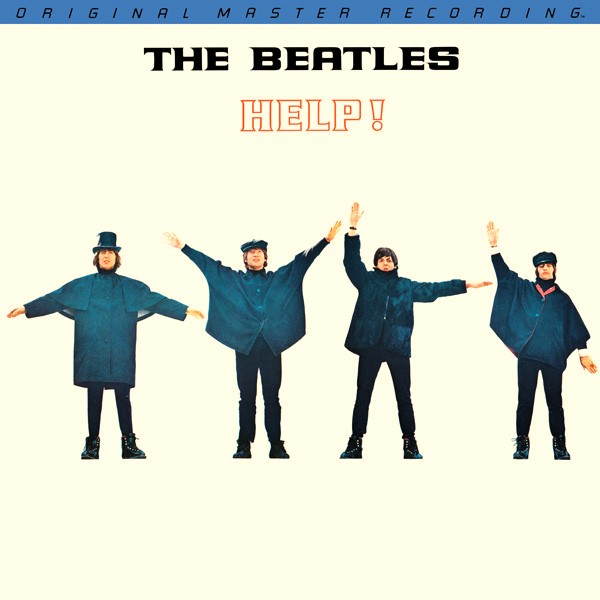 The first time the original British "Help!" album was made available in America was the vinyl "Original Master Recording" edition released through Mobile Fidelity Sound Lab in January of 1986. This album included "You've Got To Hide Your Love Away" and was prepared utilizing half-speed mastering technology from the original master tape on loan from EMI. This version of the album was only available for a short time and is quite collectible today. The first time the original British "Help!" album was made available in America was the vinyl "Original Master Recording" edition released through Mobile Fidelity Sound Lab in January of 1986. This album included "You've Got To Hide Your Love Away" and was prepared utilizing half-speed mastering technology from the original master tape on loan from EMI. This version of the album was only available for a short time and is quite collectible today.
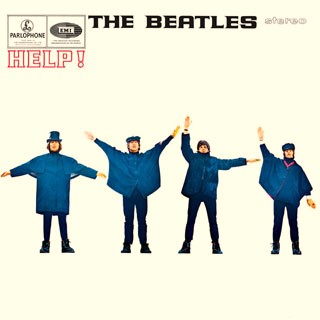 The compact disc era brought the complete British “Help!” album to the US on CD. This April 30th, 1987 release was the first Beatles compact disc to be released in stereo, although it contained George Martin’s new mixes that were created in 1986. A vinyl edition of this album came out on July 21st, 1987. This album was then remastered and re-released on September 9th, 2009 on CD using these same new mixes, the vinyl equivalent coming out on November 13th, 2012. The compact disc era brought the complete British “Help!” album to the US on CD. This April 30th, 1987 release was the first Beatles compact disc to be released in stereo, although it contained George Martin’s new mixes that were created in 1986. A vinyl edition of this album came out on July 21st, 1987. This album was then remastered and re-released on September 9th, 2009 on CD using these same new mixes, the vinyl equivalent coming out on November 13th, 2012.
 Since jukeboxes being used in the US still played 45s, Capitol saw fit to release their Cema series of Beatles singles specifically for this market. While many of the releases were identical to what was originally released in the sixties, they took it upon themselves to create new singles as well. On January 24th, 1996, they released the single “You’ve Got To Hide Your Love Away” with “I’ve Just Seen A Face” as the b-side. Since most of these “For Jukeboxes Only” releases were printed on colored vinyl, the color of choice for this single was orange. Since jukeboxes being used in the US still played 45s, Capitol saw fit to release their Cema series of Beatles singles specifically for this market. While many of the releases were identical to what was originally released in the sixties, they took it upon themselves to create new singles as well. On January 24th, 1996, they released the single “You’ve Got To Hide Your Love Away” with “I’ve Just Seen A Face” as the b-side. Since most of these “For Jukeboxes Only” releases were printed on colored vinyl, the color of choice for this single was orange.
 The highly anticipated “Anthology 2” album was also released the same year on March 19th. The EMI vaults were purged to give us a sneak peak at the recording sessions for this song, which included the “take one” false start, the beginning studio chatter of “take two” (with John’s “Paul’s broken a glass” tune), and the charming “take five” in its entirety. The highly anticipated “Anthology 2” album was also released the same year on March 19th. The EMI vaults were purged to give us a sneak peak at the recording sessions for this song, which included the “take one” false start, the beginning studio chatter of “take two” (with John’s “Paul’s broken a glass” tune), and the charming “take five” in its entirety.
In preparation for the above release, radio stations received a sampler disc just prior to the release of the "Anthology 2" album that featured the same mix of "You've Got To Hide Your Love Away" that is indicated above.
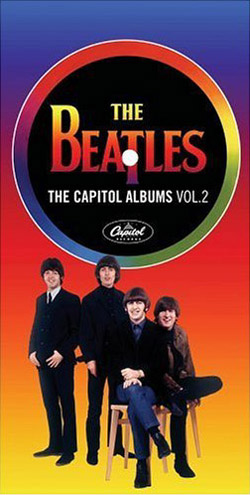 On April 11th, 2006, the box set “The Capitol Albums, Vol. 2” was released, featuring all four Capitol Beatles’ albums that originally came out in 1965. The entire “Help!” Soundtrack album was included, complete with the Ken Thorn instrumentals. On April 11th, 2006, the box set “The Capitol Albums, Vol. 2” was released, featuring all four Capitol Beatles’ albums that originally came out in 1965. The entire “Help!” Soundtrack album was included, complete with the Ken Thorn instrumentals.
“You’ve Got To Hide Your Love Away” was even included in the promotional CD sampler that was issued to radio stations just prior to the above mentioned box set. Both the stereo and folded mono mixes were included in this hard to find collector’s item.
 Sometime around November 6th, 2007, Capitol released the “7 Song Radio Sampler” in promotion for the latest “Help!” DVD. This disc contained all of The Beatles soundtrack songs from the movie, including “You’ve Got To Hide Your Love Away.” Sometime around November 6th, 2007, Capitol released the “7 Song Radio Sampler” in promotion for the latest “Help!” DVD. This disc contained all of The Beatles soundtrack songs from the movie, including “You’ve Got To Hide Your Love Away.”
 America finally got a chance to own the original mono mix of the song as it was included within the remastered box set “The Beatles In Mono,” which was released on CD on September 9th, 2009. While it’s not substantially different, the audiophile can surely appreciate the subtle nuances of this superior mix. As a bonus on this release, the original stereo mix from 1965 is also included in a newly remastered state. The vinyl edition of this box set was first released on September 9th, 2014. America finally got a chance to own the original mono mix of the song as it was included within the remastered box set “The Beatles In Mono,” which was released on CD on September 9th, 2009. While it’s not substantially different, the audiophile can surely appreciate the subtle nuances of this superior mix. As a bonus on this release, the original stereo mix from 1965 is also included in a newly remastered state. The vinyl edition of this box set was first released on September 9th, 2014.
 Also released on September 9th, 2009, in promotion of the remastered Beatles catalog, the "09.09.09 Sampler" was distributed to retailers and radio programmers, "You've Got To Hide Your Love Away" being featured therein. This has become quite the find for collectors. Also released on September 9th, 2009, in promotion of the remastered Beatles catalog, the "09.09.09 Sampler" was distributed to retailers and radio programmers, "You've Got To Hide Your Love Away" being featured therein. This has become quite the find for collectors.
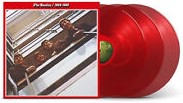 A 50th Anniversay edition of the compilation album "The Beatles / 1962 - 1966" (aka "The Red Album") was released on November 10th, 2023, the new stereo mix of "You've Got To Hide Your Love Away," as detailed above, being included. This expanded release included 12 additional songs for a total of 38 tracks, and was made available as a double CD and as a triple vinyl release on both black and red vinyl. A 50th Anniversay edition of the compilation album "The Beatles / 1962 - 1966" (aka "The Red Album") was released on November 10th, 2023, the new stereo mix of "You've Got To Hide Your Love Away," as detailed above, being included. This expanded release included 12 additional songs for a total of 38 tracks, and was made available as a double CD and as a triple vinyl release on both black and red vinyl.
Live Performances
“One I do which I like is ‘You’ve Got To Hide Your Love Away’ – but it’s not commercial.” This statement from John Lennon in 1965 about their recently recorded soundtrack songs may possibly be the reason why they never performed the song live.
Conclusion
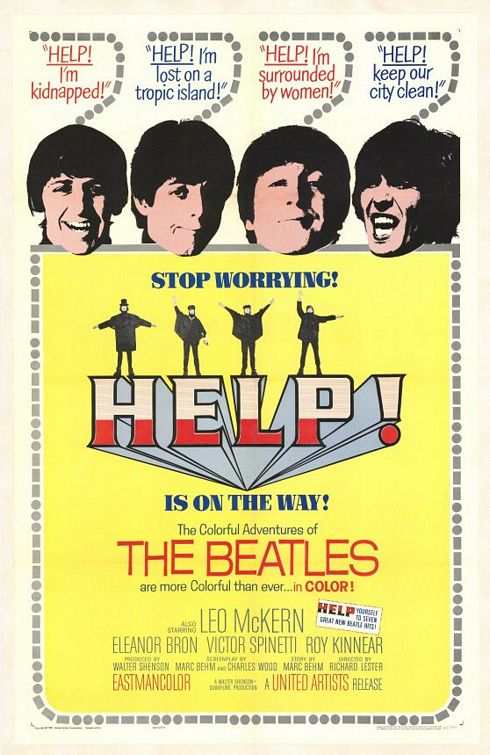 Although they may not have thought the song was commercial enough to be a hit, I’m sure most will agree that “You’ve Got To Hide Your Love Away” was striking enough to attain mass attention in the movie as well as on both their US and British albums. In the "Help!" film, they all sit around their “Beatles pad” and play the song while making silly faces and gestures, Ringo sitting at John’s feet in his “bed pit” hitting his tambourine. This amusingly charming scene from the movie alone gave the song amazing exposure and won the hearts of millions of fans. No wonder that British and American record labels thought to include the song in so many compilation albums throughout the years. Although they may not have thought the song was commercial enough to be a hit, I’m sure most will agree that “You’ve Got To Hide Your Love Away” was striking enough to attain mass attention in the movie as well as on both their US and British albums. In the "Help!" film, they all sit around their “Beatles pad” and play the song while making silly faces and gestures, Ringo sitting at John’s feet in his “bed pit” hitting his tambourine. This amusingly charming scene from the movie alone gave the song amazing exposure and won the hearts of millions of fans. No wonder that British and American record labels thought to include the song in so many compilation albums throughout the years.
 The irresistibility of this song, which is one of many to expose the convincing depiction of John’s sad and vulnerable side, will forever be remembered as one of his finest achievements. No matter who chooses to record their rendition, whether it be the British group The Silkie (who scored a top ten hit on the US Billboard Hot 100 in 1965), Waylon Jennings, or even Pearl Jam’s Eddie Vedder from the soundtrack of the Academy Award nominated movie “I Am Sam,” the true essence of this amazing composition can’t help but shine through. The irresistibility of this song, which is one of many to expose the convincing depiction of John’s sad and vulnerable side, will forever be remembered as one of his finest achievements. No matter who chooses to record their rendition, whether it be the British group The Silkie (who scored a top ten hit on the US Billboard Hot 100 in 1965), Waylon Jennings, or even Pearl Jam’s Eddie Vedder from the soundtrack of the Academy Award nominated movie “I Am Sam,” the true essence of this amazing composition can’t help but shine through.
Song Summary
“You’ve Got To Hide Your Love Away”
Written by: John Lennon / Paul McCartney
-
Song Written: December, 1964 - January, 1965
-
Song Recorded: February 18, 1965
-
First US Release Date: August 13, 1965
-
-
US Single Release: Capitol/Evatone #420826CS (Flexi-disc, 1982)
-
Highest Chart Position: n/a
-
British Album Release: Parlophone #PCS 3071 “Help!”
-
Length: 2:08
-
Key: G major
-
Producer: George Martin
-
Engineers: Norman Smith, Ken Scott
Instrumentation (most likely):
- John Lennon - Vocals, Rhythm Guitar (1964 Framus Hootenanny 5/024 acoustic 12-string)
- Paul McCartney - Bass Guitar (1963 Hofner 500/1), maracas
- George Harrison – Rhythm Guitar (1950 Jose Ramirez Guitarra de Estudio), Rhythm Guitar (1964 Framus Hootenanny acoustic 12-string)
- Ringo Starr – Drums (1964 Ludwig Super Classic Black Oyster Pearl), tambourine
- Johnnie Scott - Tenor and Alto Flute
Written and compiled by Dave Rybaczewski
|
IF YOU WOULD LIKE TO MAKE A DONATION TO KEEP THIS WEBSITE UP AND RUNNING, PLEASE CLICK BELOW!
Sign Up Below for our MONTHLY BEATLES TRIVIA QUIZ!
|